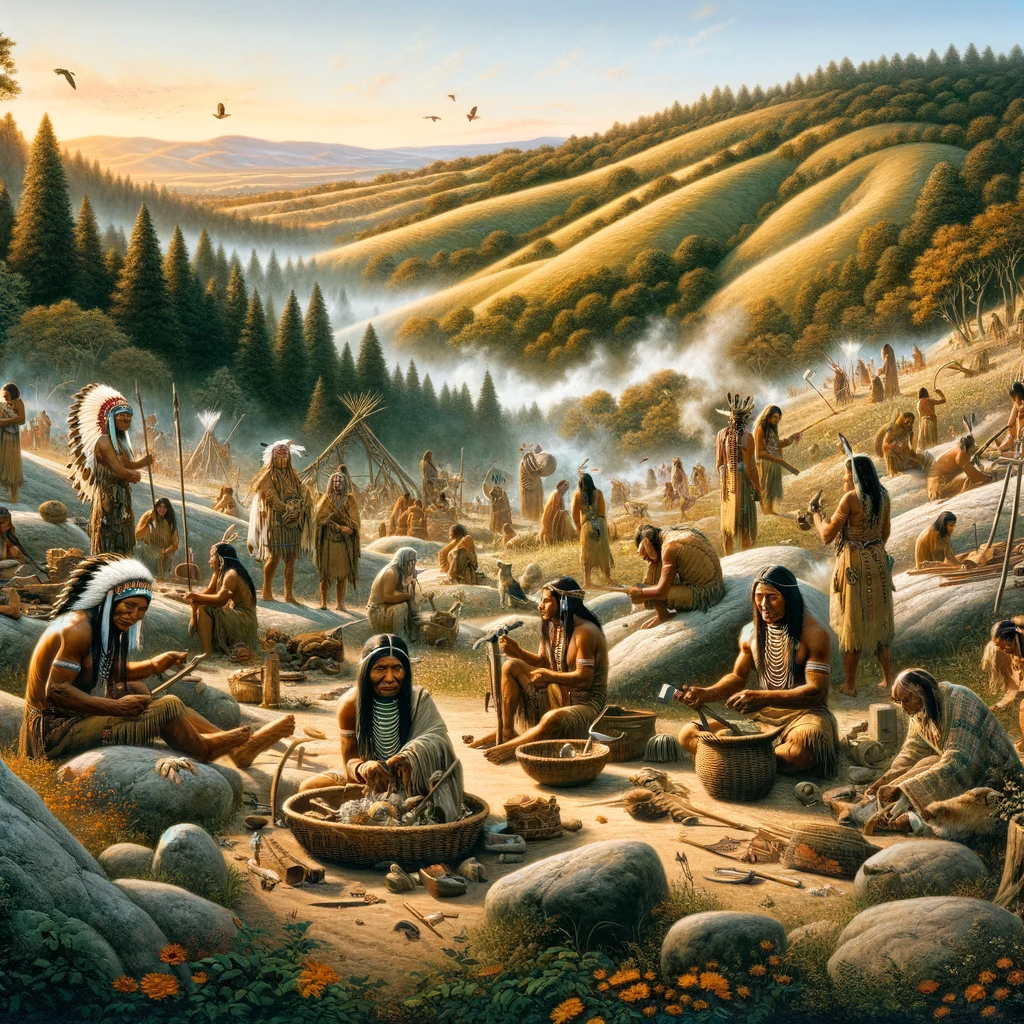Early Native American inhabitants of the Berkeley Area
Berkeley, known for its prestigious University of California campus and stunning views of the San Francisco Bay, has a rich history that predates its establishment as a city. Long before the arrival of Spanish explorers and the Gold Rush of 1849, this area was home to the Ohlone people, the indigenous inhabitants of the Berkeley region. In this article, we will uncover the fascinating history of the Ohlone, their deep connection to the land, and their enduring legacy in the San Francisco Bay Area.

Who Were the Ohlone People?
The Ohlone, also known as the Costanoans, were a group of indigenous people native to the central and northern California coast, including the Berkeley area. They were part of the larger Utian language family, with distinct dialects such as Chochenyo spoken in the East Bay. The Ohlone culture was deeply rooted in their connection to the land, and they lived in harmony with the natural resources of the region.
The Berkeley Area and the Ohlone
The Berkeley area, nestled on the eastern shore of the San Francisco Bay, was a significant part of the Ohlone’s ancestral and unceded land. The West Berkeley Shellmound, a large archaeological site, bears witness to their presence. Shellmounds were created by the Ohlone people over thousands of years and served as both living areas and burial sites. They are considered sacred grounds by modern indigenous communities.
The Arrival of Spanish Explorers
In 1769, Spanish explorer Gaspar de Portolà arrived in the San Francisco Bay region, marking the beginning of European contact with the Ohlone. The Spanish claimed the land for their empire, leading to the establishment of missions, including Mission Dolores in San Francisco, where Ohlone people were forced to labor.
The Gold Rush and Its Impact
The Gold Rush of 1849 brought an influx of non-indigenous people to California, further disrupting the lives of the Ohlone. Land was taken from them, and their traditional way of life was greatly affected. The city of Berkeley, like many others in California, was founded during this period.
Muwekma Ohlone Tribe: Fighting for Recognition
Today, the Muwekma Ohlone Tribe continues to advocate for recognition and Indigenous sovereignty. They are among the indigenous groups in the San Francisco Bay Area who trace their ancestry through the missions and are members of the historic, federally recognized Verona Band of Alameda County.
Living in the Bay Area on Ohlone Land
It’s essential for all residents of the San Francisco Bay Area, including Berkeley, to recognize that they are living on Ohlone land. Indigenous people have inhabited this region for thousands of years, long before the arrival of European settlers. Acknowledging this fact is a crucial step in honoring the history and culture of the Ohlone people.
The Shuumi Land Tax
To support the indigenous communities and pay reparations, Berkeley residents can voluntarily participate in the Shuumi Land Tax, a unique program that redistributes funds to the Muwekma Ohlone Tribe and other indigenous organizations.
Celebrating Indigenous Heritage
Berkeley and neighboring Albany are committed to celebrating Indigenous heritage. Initiatives include naming locations with Ohlone words, recognizing Indigenous Peoples’ Day, and supporting educational programs about the Ohlone culture.
Conclusion
The history of the Ohlone people is deeply intertwined with the land, culture, and heritage of the Berkeley area and the broader San Francisco Bay region. Acknowledging and honoring their presence is not only a historical imperative but a way to support the ongoing struggle for indigenous sovereignty and justice. As we celebrate the rich history of Berkeley, we must also remember and respect the Ohlone and their enduring legacy in the East Bay.

